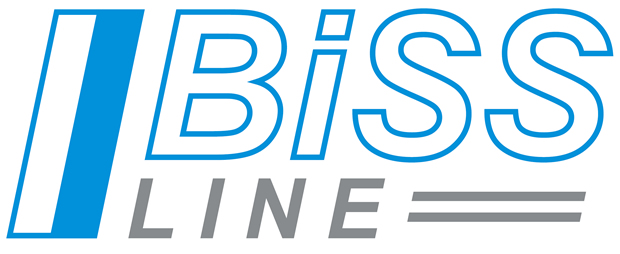Open-source single-cable interface simplifies system wiring
Digital feedback in the same cable and using the same connectors as motor power is a current trend in electrical drive systems. This single-cable approach simplifies system wiring and makes installation and maintenance easier. These advantages have already attracted the interest of both users and manufacturers.
The technical challenges of single-cable technology have been solved and proprietary products are already available in the market. However, proprietary protocols limit the diversity of manufacturers and solutions by making interconnectability difficult or impossible. Thus, competitive products from different manufacturers are slow to appear.
The open BiSS Line protocol provides a universal and robust solution for all manufacturers and users.

Since its launch in 2002, BiSS has established itself worldwide as an open, standardised sensor interface. The BiSS user community has been working on single-cable technology since 2014. The resulting BiSS Line protocol was presented as the first open interface for single-cable technology at the 2016 SPS IPC Drives exhibition in Nuremberg, Germany.
A decisive advantage of BiSS Line is full compatibility with the existing single-cable infrastructure, including cables, connectors, and transmission technology. Using the well-established RS-485 half-duplex physical layer, the BiSS Line protocol provides robust digital feedback with low jitter. A 4-wire solution with separate communication and supply lines or a 2-wire solution with combined communication and supply is available.
The optional Forward Error Correction (FEC) provides even more robust data transmission. In addition, the open BiSS Line protocol provides higher noise immunity when transmitting the position capture time, which is encoded and includes error correction.
Furthermore, the BiSS Line protocol is 100% compatible with BiSS C. This means that all existing BiSS definitions such as Electronic Data Sheets (EDS), user data memory (USERDATA), BiSS profile definitions, ID and serial numbers, etc. can be re-used, accelerating integration of BiSS Line in both sensors and drives. Even BiSS Safety solutions can be implemented directly using BiSS Line. All BiSS Safety contents are covered by the BiSS protocol and are transferable via BiSS Line.
The modular approach and the preservation of all sensor definitions and protocol contents enable sensor manufacturers to easily convert existing BiSS C systems to BiSS Line. Conversion of existing sensor systems to BiSS Line can be done either in the sensor housing, the connectors, or the system wiring.
Due to the popularity and availability of RS-485 transmission technology, hardware modification on the drive side is not necessary. The drive can be expanded to be BiSS Line compatible by reconfiguring hardware (FPGA or CPLD) or software, therefore only a firmware change is required. The cables and connectors already available for single-cable use from many manufacturers can be used without modifications for BiSS Line.







